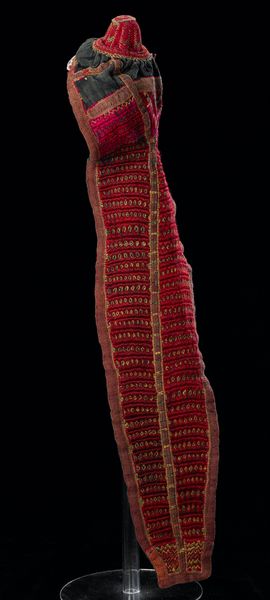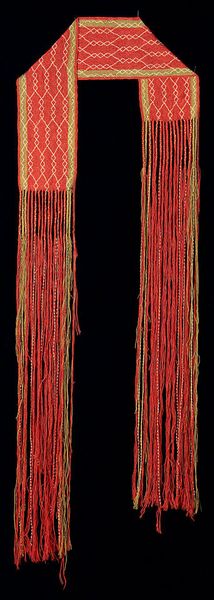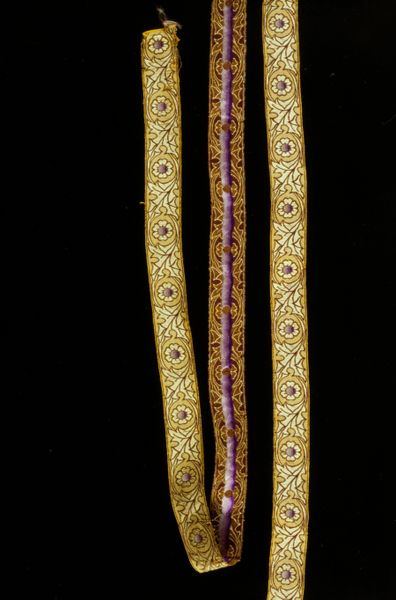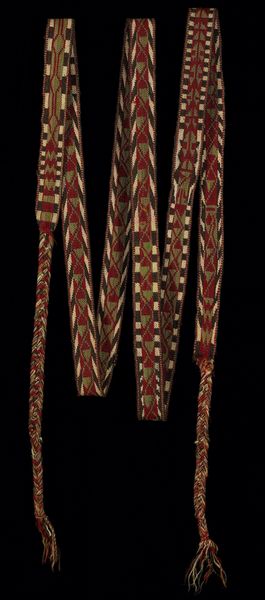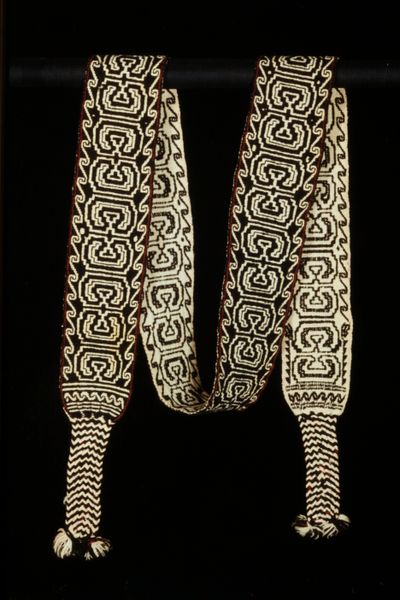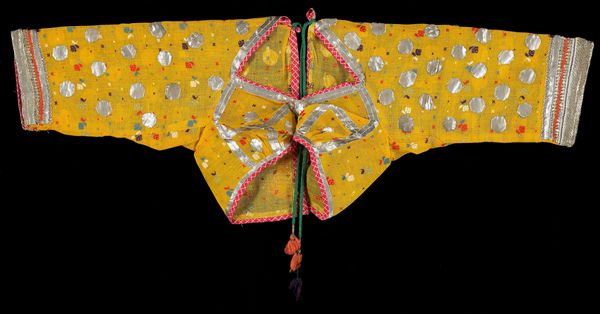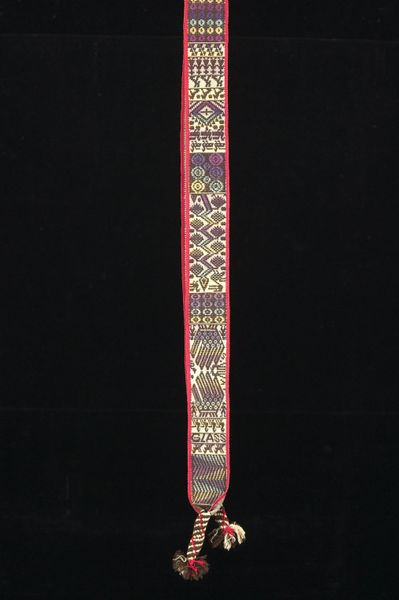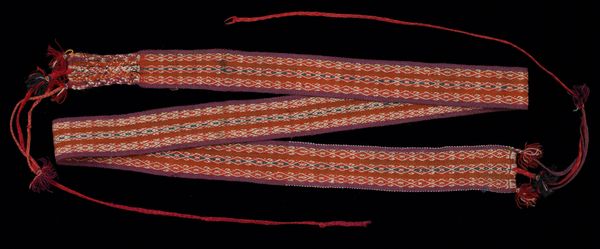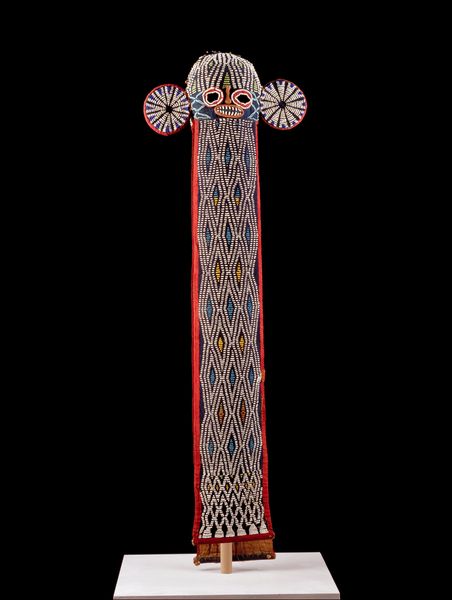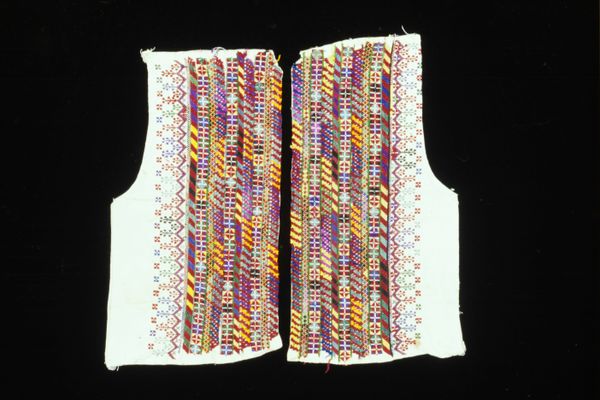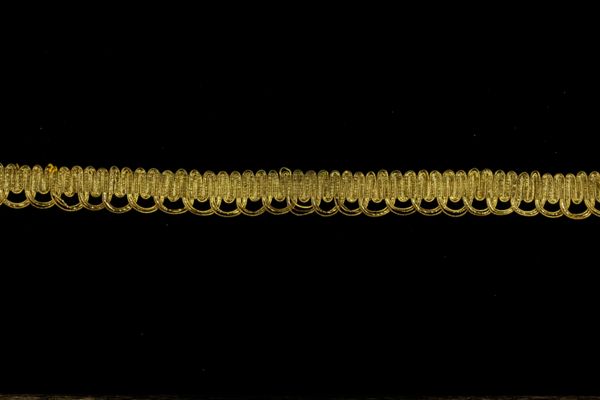
fibre-art, textile
#
fibre-art
#
random pattern
#
asian-art
#
textile
#
geometric pattern
#
abstract pattern
#
repetition of pattern
#
intricate pattern
#
pattern repetition
#
decorative-art
#
layered pattern
#
funky pattern
#
combined pattern
#
repetitive pattern
Dimensions: 69 x 27 in. (175.26 x 68.58 cm) (object part, a)70 1/2 x 27 1/4 in. (179.07 x 69.22 cm) (object part, b)24 x 170 in. (60.96 x 431.8 cm) (object part, c)
Copyright: Public Domain
Editor: So, here we have what's titled "Door Surround," created around the 20th century. It’s made from cotton and silk and part of the Minneapolis Institute of Art's collection. I’m immediately struck by how ornate it is. It looks like meticulous needlework went into crafting it. What social or cultural role might something like this have played? Curator: That’s a keen observation. Door surrounds, particularly in certain South Asian cultures, often served as indicators of status and markers of celebratory spaces. This textile artwork suggests the politics of display – who has access to beauty, and how is it presented? Consider also, who made this and under what conditions? Editor: I hadn’t considered that. So, the act of decorating a doorway becomes a public declaration? Curator: Exactly. And the door itself takes on symbolic weight as a threshold, a point of transition and welcome. In whose home might one find such decoration? What social class and gender of individual produced the detailed work? How does the use of cotton and silk shape your perception, compared to less expensive materials? Editor: Using silk definitely elevates it. It speaks to luxury and skillful craft, and the patterns feel vibrant and celebratory. How do museums contextualize art like this, considering its original, probably very different, environment? Curator: Museums grapple with this constantly. By isolating the object and placing it within gallery walls, we’re inevitably shifting its meaning. Yet, ideally, a museum offers the opportunity for sustained attention, historical investigation, and, hopefully, respectful appreciation for both the object and the culture that produced it. We can at least address and reflect upon our curatorial choices and cultural framing of artwork from different communities. Editor: It is interesting how relocating this object shifts its cultural message from domestic space to museum. Curator: Precisely. A powerful transition worth considering in understanding its multiple contexts and values. Editor: I'll definitely think about the implications of art display within public institutions from now on! Curator: Excellent.
Comments
No comments
Be the first to comment and join the conversation on the ultimate creative platform.
